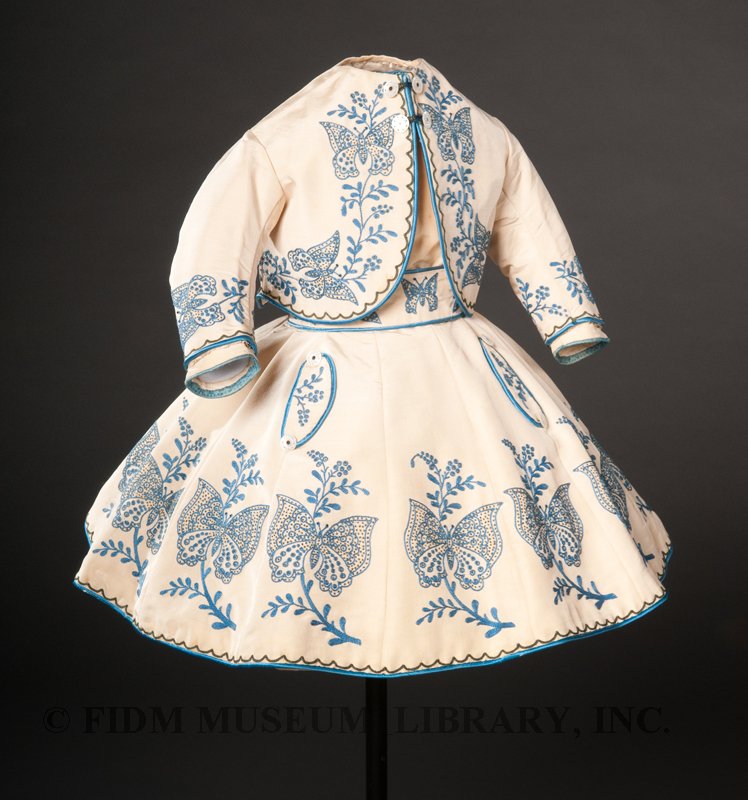 Girl's ensemble
Girl's ensemble
c. 1865
Silk faille, cotton embroidery floss & mother-of-pearl
Museum Purchase
2010.5.4A-C
Pink for girls and blue for boys is a twentieth-century adage; these colors were not always gendered this way. During the nineteenth century, pink was seen as a shade of red: a forceful color aligned with traditional masculinity and thus appropriate for growing boys. Blue was symbolic of the Virgin Mary and conventional femininity, making the dainty shade suitable for little girls. Colors aside, young girls and boys alike were clad in skirts as a testament to their residency in the nursery, a feminine realm of mothers and nursemaids. Clothing construction was gender specific: girls' dresses buttoned up the back, training them to require help dressing, while boys' had center front closures, preparing them to be self sufficient. Both the hand-embroidered blue butterflies fluttering around this ensemble and its back-fastening bodice confirms that it was made for a little girl. The butterfly motif has long signified the transience of childhood: youngsters grow quickly into adults, just as butterflies metamorphose from caterpillars. Significant, too, is the suggestion of chasing butterflies, a spring pastime traditionally depicted as part of childhood play. The link between butterflies and childhood was carried into the twentieth century; this 1920s hand-painted "Dainty Blossom" ensemble also features fanciful butterflies.


I haven’t known about the front/back buttoning distinction and the reason behind it, and now I do.